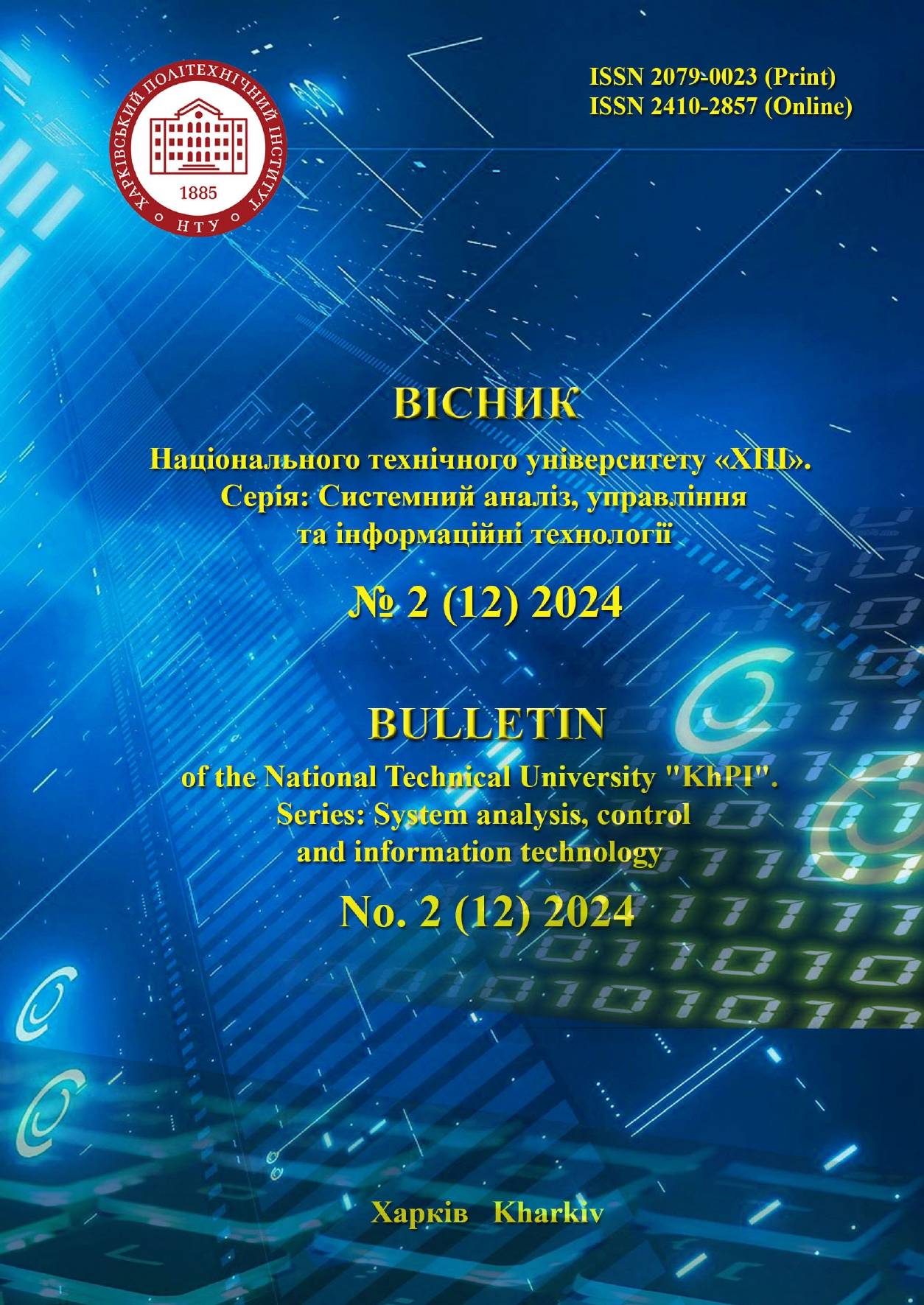SITUATIONAL MODEL OF A MEDICAL BUSINESS PROCESS
DOI:
https://doi.org/10.20998/2079-0023.2024.02.07Keywords:
medical business process, situational model, clinical pathway, care pathway, transmural pathway, resource constraints, temporal constraints, individualized treatmentAbstract
The subject of the research is medical business processes. The aim of the work is to develop a situational approach to modeling a generalized medical business process. Achieving this goal makes it possible to provide a specified level of medical services within the existing resource constraints of the medical business process. To achieve the goal, the following tasks are solved: structuring medical business processes considering the differences in treatment in the clinic, care, and the full process of patient treatment; development of a situational model of the medical business process. The structuring of medical business processes has been carried out. It is shown that such processes consist of a clinical pathway, care pathway, and disease treatment pathway. The clinical pathway is implemented within a single medical institution. The care pathway defines a comprehensive description of the sequence of care and treatment. The complete disease treatment pathway integrates various healthcare institutions. The treatment pathway includes the clinical pathway and care pathway as subprocesses. A situational model of a generalized medical business process is proposed, consisting of a sequence of situations. Each situation involves a choice considering resource, financial, and temporal constraints, and the subsequent execution of a sequence of actions of the medical business process. The model, in accordance with the presented structuring of medical business processes, at the top level of representation contains phases of primary medical care, outpatient treatment, clinical pathway, and discharge and rehabilitation. The model creates conditions for choosing an individualized treatment process considering the patient's needs and temporal and resource constraints. The typical sequence of actions of the medical business process is determined at the level of a set of situations, and the choice of alternatives is made within the situation. The sequence of situations sets the general standard of care or treatment, and individualization is performed within individual situations, taking into account the patient's needs and financial constraints.
References
Patharkar A., C., Cai F., B., Zardiniy A., Al-Hindawi F., Wu T. Predictive modeling of biomedical temporal data in healthcare applications: review and future directions. Frontiers in Physiology 15. Sec. Computational Physiology and Medicine. 2024, vol. 15. DOI: 10.3389/fphys.2024.1386760.
Van der Aalst W. Business Process Management: A Comprehensive Survey. ISRN Software Engineering. 2013, pp. 1-37. DOI:1155/2013/507984.
Rasoli N., Jolai F. Mehdi M., Tehranian A. BPM application in clinical process improvement: a women 'hospital case study. Business Process Management Journal. 2024, vol. 30(3), pp. 986-1011. DOI: 10.1108/BPMJ-07-2023-0560.
Petrocelli John V. Pitfalls of Counterfactual Thinking in Medical Practice: Preventing Errors by Using More Functional Reference Points. Journal of Public Health Research. 2013, vol. 2:e24, pp. 136-143.
De Ramón Fernández A., Ruiz Fernández D., Sabuco García Y. Business Process Management for optimizing clinical processes: A systematic literature review. Health Informatics Journal. 2020, vol. 26(1), pp. 1305-1320. DOI: 10.1177/1460458219877092.
Dumas M., La Rosa M., Mendling J., Reijers H.A. Fundamentals of Business Process Management. Berlin: Springer, 2018. 527 p.
Chinosi M., Trombetta A. BPMN: An introduction to the standard. Computer Standards & Interfaces. 2012, vol. 34, pp. 124–134.
Van der Aalst W. Process Mining: Data Science in Action. 2nd ed. Berlin: Springer. 2016. 467 p.
Pearl J., Mackenzie D. The Book of Why: The New Science of Cause and Effect. New York: Basic Books. 2018. 432 p.
Bьscher A., Kugler J. The effectiveness of clinical pathways in inpatient settings ‑ an umbrella review. Journal of Public Health. 2024, pp. 1-15. DOI: 10.1007/s10389-024-02227-w.
Downloads
Published
How to Cite
Issue
Section
License

This work is licensed under a Creative Commons Attribution 4.0 International License.
Authors who publish with this journal agree to the following terms:
- Authors retain copyright and grant the journal right of first publication with the work simultaneously licensed under a Creative Commons Attribution License that allows others to share the work with an acknowledgement of the work's authorship and initial publication in this journal.
- Authors are able to enter into separate, additional contractual arrangements for the non-exclusive distribution of the journal's published version of the work (e.g., post it to an institutional repository or publish it in a book), with an acknowledgement of its initial publication in this journal.
- Authors are permitted and encouraged to post their work online (e.g., in institutional repositories or on their website) prior to and during the submission process, as it can lead to productive exchanges, as well as earlier and greater citation of published work (See The Effect of Open Access).


